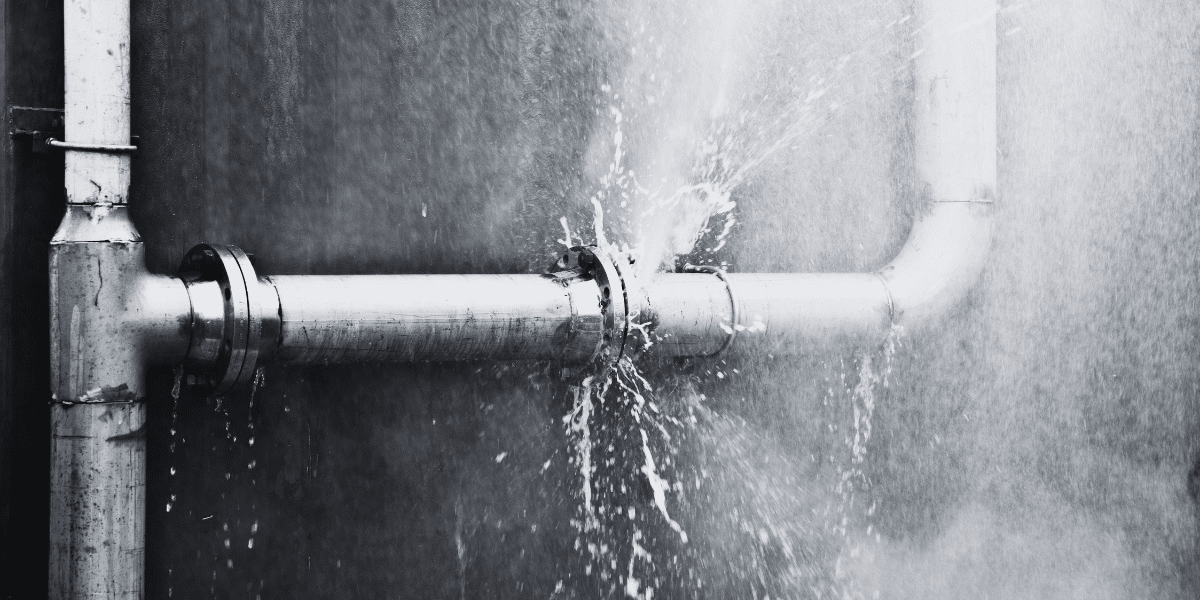Decreasing Annual Losses from Non-Weather Water Damage Claims Payouts
Non-weather water damage claims are a big problem for insures and have continued to be the second leading cause of home insurance claims since 2016. Although catastrophic claims typically receive all the headlines in the news, it is the frequency and commonality of non-cat water damage that poses more of an issue for insurers nationwide.
PropertyCasualty360 reported non-weather related water losses are causing serious damage to homes and commercial buildings and account for $13 billion in annual losses for insureds, while water damage or freezing pipes continue as the second leading cause of home insurance claims. In 2022, The Hartford, reported about 75% of all real estate water damage losses were caused by accidental discharge of plumbing, HVAC systems, and appliances, with “the three leading causes of water damage [being] accidental water discharge, freezing pipes, and sprinkler leakage.” Yet, losses from non-weather related water damage are not always limited to just the claims on structural damage. Losses include income loss, expenses on a rebuild and the cost of relocating residents during building repair. The losses add up, and they can add up quickly. In fact, the average water damage claim payout between 2016 and 2020 was $11,605 and typical ranges fall between $1,322 to $5,954 per the Triple-I’s report. Triple-I estimates one in 60 homes will file a water damage claim in 2024, or 1.6% of all US insured homes. These figures aren’t taking into account commercial properties such as construction sites and senior living centers that are also experiencing a rise in non-weather water claims.
For insurers, the problem of non-weather water damage claim payouts is significant.
What if technology offers a key solution for reducing non-weather water losses and what does it means for Insurers?
Technology Can Help in Leak Detection
Technology is helping mitigate the damage brought about by non-weather water losses and can make a significant impact on the reduction of the severity of claim payouts since the average water leak goes undetected for more than 75 days. Water mitigation plans using Internet of Things (IoT) technologies such as water and leak detection sensors and emergency shut-off valves that detect water leaks and help prevent damage; ultimately benefit both the consumer and the insurer with fewer and lower-severity claims. Technology helps in detecting the presence of water, identifying and isolating the source, and reduces the time water has the potential to cause damage.
Insurers who are incentivizing insureds to get smart about non-weather water damage prevention have an opportunity to decrease their annual losses from water damage payouts while educating consumers on understanding the significance and magnitude the problem of water damage poses on a home or business; including the risk of mold growth which poses a serious health hazard.
Insurers can help their insureds build a water damage mitigation plan and require insureds to take necessary action prior to policy bind including:
- Identifying all water sources and control valves
- Installing Internet of Things (IoT) water or leak sensing technologies for quick detection
- Educating customers on the risks of water and require water detection sensors to be installed as a prerequisite to policy coverage like the requirements on fire hazards, such as fire alarms installed in the home
Proactive measures performed by the home, business, or property owner can help tremendously, and technology can act as an additional resource for insurers to help in reducing water damage claim payouts. In addition to many in-home installed technological devices, insurance carriers have options using technology to help mitigate or reduce annual non-cat water losses and support a reduction in the number of filed claims they receive on homes or commercial properties.
Insurance carriers can take advantage of implementing technology that proactively identifies the frequency, severity and loss costs associated with non-cat water damage claims using high-tech intelligence so they too, can be better informed and prepared for future non-weather water damage claims across the portfolio, and do so before the event even occurs.
How Pinpoint Intelligence Helped Unlocked Loss Ratio by 4 Points using Loss Cost Predictions on Non-Weather Water Losses and a Projected Savings of $35M Culminating by Year-3
Read the case study on how Pinpoint Predictive helped a national home insurer identify non-cat water losses using behavioral predictions and how Pinpoint offered a solution to combat the problem of increasing costs of claims of non-weather water, cost of services for plumbing and parts increasing, and more frequent and larger payouts due to non-cat water losses the insurer was experiencing.






